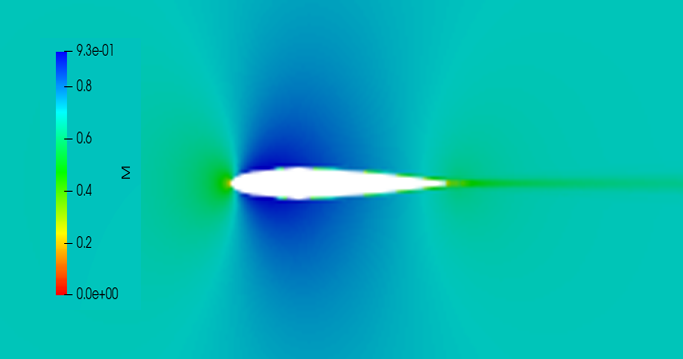Is it because the BL thickens after the shock so the drag increases, causing a increased friction? Here M=0.82 far from the airfoil, the picture represents the static temperature in Kelvins around the symetrical airfoil at angle of attack 0°.
This is the total temperature for a supposedly everywhere adiabatic flow.
This is not the static temperature but the Mach number, for $M_{\infty}=0.70$
 Mach number for $M_{\infty}=0.80$
Mach number for $M_{\infty}=0.80$
 Mach number for $M_{\infty}=0.99$
Mach number for $M_{\infty}=0.99$
 Mach number for $M_{\infty}=1.20$
Mach number for $M_{\infty}=1.20$
I understand that as velocity decreases, temperature rises, but I have another file that shows the evolution of static pressure and it does not increase as static temperature does, after the shock in the BL.
Thank you



